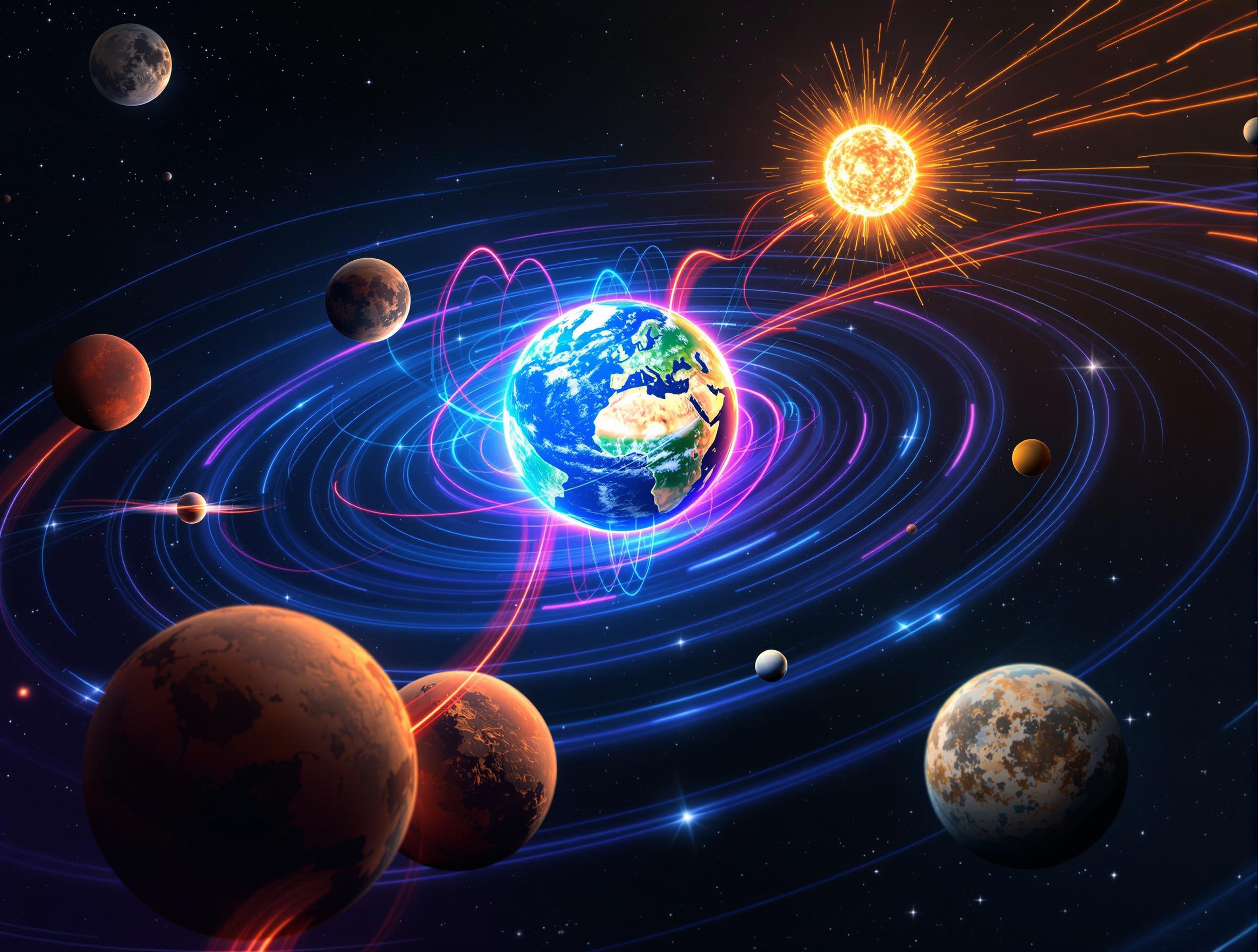The Invisible Void
Terraforming Mars, Venus, or Titan is a dream we can’t realize — not without the one thing none of them have: a magnetic shield.
1. The Missing Heart
Terraforming always starts with atmosphere: can we heat the surface, melt the ice, pump CO₂ into the sky, grow pressure and warmth? But all of these ideas collapse when faced with what every terraforming plan overlooks — the magnetic field.
The Earth’s magnetic field is unseen, yet it is the most essential force behind our planet’s habitability. It deflects the solar wind, protects the atmosphere, and shields life from deadly radiation. Without it, Earth would likely be barren and hostile.
No planet in the Solar System possesses a magnetic field like Earth’s. And this fact alone renders them unterraformable.
2. Mars: The Leaky Bucket
Mars is the poster child of terraforming dreams. It has water, a familiar day length, seasonal patterns. But it lacks one thing that makes everything else irrelevant: a global magnetic field.
Its core solidified too early, extinguishing the natural dynamo that once shielded it. Since then, the solar wind has stripped its atmosphere, molecule by molecule.
Even if we:
- released all polar CO₂,
- triggered a runaway greenhouse effect,
- injected breathable oxygen,
it would all be undone. The new Martian atmosphere would slowly dissipate. Mars cannot hold what we give it. Without a magnetic shield, terraforming Mars is a long illusion with a short lifespan.
3. Venus: The Beautiful Trap
Venus has the right size, the right gravity. But that’s where the similarities end. It is an atmospheric hell: 92 times Earth's pressure, 460°C temperatures, clouds of sulfuric acid, and a CO₂-dominated sky.
Like Mars, Venus lacks a global magnetic field. What little it has is an induced field, weak and unstable. Even if we found a way to cool Venus and strip its choking atmosphere, the solar wind would eventually erode anything we build.
There’s no protection. No permanence.
4. The False Hope of the Outer Moons
Titan, Europa, Ganymede — icy moons with water, chemistry, intrigue. Titan has a thick atmosphere. Europa hides an ocean beneath the crust. Ganymede has a faint magnetic field.
But none of them:
- receive enough solar energy,
- have sufficient gravity to retain light gases,
- offer a stable magnetosphere.
They are too cold, too distant, too small. Their habitability remains locked in fiction.
5. Technology Is Not Enough
Concepts exist to build a planetary magnetic field:
- positioning a magnetic shield at Mars’ L1 Lagrange point,
- installing a surface-wide grid of electromagnetic generators,
- reigniting planetary cores with artificial heat.
But these solutions demand:
- energy outputs far beyond current planetary scale,
- extreme materials,
- uninterrupted operation for millennia.
These are visions of interstellar civilizations, not 21st-century Earth. Not yet. Maybe not ever.
6. Terraforming Is a Beautiful Illusion
The core mistake of terraforming theory is the assumption that water, oxygen, and heat are enough. They are not.
Without a planetary magnetic field, even the most careful atmospheric engineering will deteriorate over time. Radiation will break apart molecules. Gases will escape into space. Weather will fail. Life will not endure.
Terraforming without protection is like building a city beneath a collapsing dam.
7. Earth Is the Only Planet That Can Be Terraformed
None of the worlds in our solar system offer the right combination of:
- gravity,
- magnetic shielding,
- light,
- atmospheric retention.
Only Earth has them. The only truly terraformable planet... is the one we already have.
And maybe that’s the truth we’ve been trying to avoid. Instead of fixing the one world that works, we dream of building imitations that never will.
There is no refuge beyond Earth. Only cold simulations of home. Only ghosts of possibility, scattered in the wind.








Leave a Comment